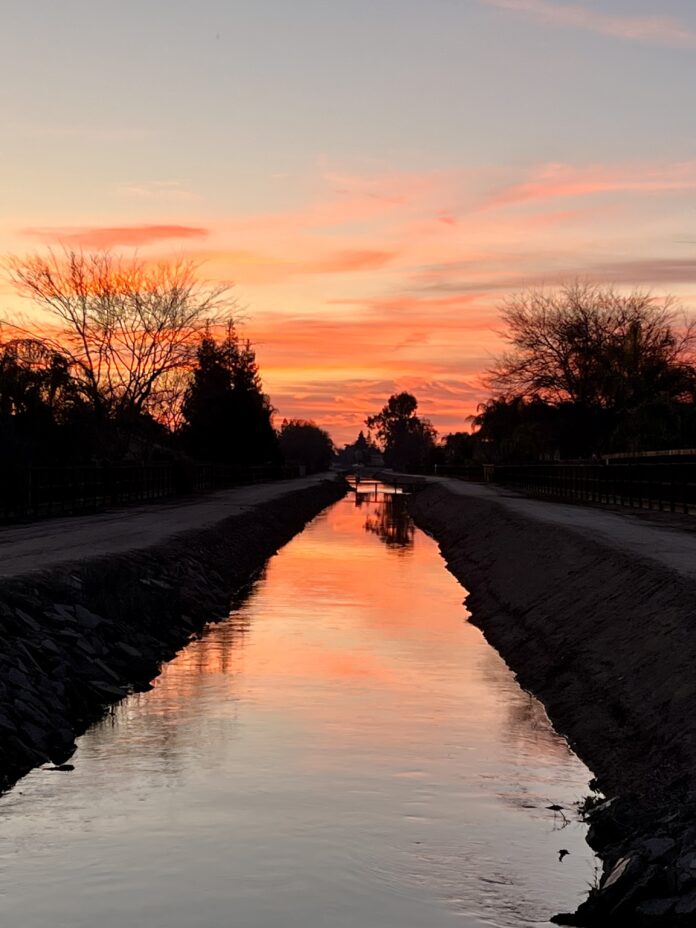Editor’s note: This is part one of a two part report on the State Water Resources Control Board’s hearing on the Bay/Delta Plan.
The State Water Resources Control Board’s staff have written a draft report dealing with updates to the Water Quality Control Plan for the San Francisco Bay/Sacramento-San Joaquin Delta Estuary, also known as the Bay-Delta Plan. A public comment hearing and staff workshop was held Monday, December 11, 2023 starting at noon, on Zoom and in-person at the Joe Serna Jr. CalEPA Building in Sacramento. There have been two other such hearings earlier on November 17th and December 1st. The executive summary of the report was 69 pages. But take heart, more than half the pages are charts and graphs and such. Multiple links to the report are attached after the report and just those alone took up two single spaced pages to list.
Joaquin Delta Estuary, also known as the Bay-Delta Plan. A public comment hearing and staff workshop was held Monday, December 11, 2023 starting at noon, on Zoom and in-person at the Joe Serna Jr. CalEPA Building in Sacramento. There have been two other such hearings earlier on November 17th and December 1st. The executive summary of the report was 69 pages. But take heart, more than half the pages are charts and graphs and such. Multiple links to the report are attached after the report and just those alone took up two single spaced pages to list.
The Hearing
The hearing began with State Board Chairman Joaquin Esquivel giving the legally required opening notices and thoughts about how the Delta impacts all of California. All five of the State Board members were present with Dee D’Adamo participating online.
The first presentation was by Department of Water Resources staff saying today’s update represents the Sacramento River and its tributaries and the Cosumnes, Mokelumne and Calaveras Rivers that flow directly into the Delta. It was mentioned the San Joaquin River portion of the Bay Delta Plan presentation has already occurred if I heard correctly. For a few years now we’ve been hearing about the Voluntary Agreements, shorted to VAs. They have a new name, Healthy Rivers & Landscapes. It’s true the agreements were voluntary because the alternative would be unimpaired flows, but participation is mandatory. So, that’s part of the name change. I’m sticking with VA for this report.
Unimpaired flows are part of the possible rulings to be made by the State Board on the plan. Much of the enviro NGO testimony is all in on sending 75 percent of all the water entering the Delta on out to sea. Oh, you have some water rights to a portion of that water flowing under the Golden Gate into the Pacific Ocean? Too bad, constitutional rights don’t count when it comes to California. Oh, you say the San Joaquin Valley is home to wildlife refuges, disadvantaged communities and is 80 percent Hispanic, surely one of the BIPOC. Too bad if they depend on imported water from the Delta for their livelihood or a place for migrating birds on the Pacific Flyway to nest. Too bad if unimpaired flows deplete the cold water pools in reservoirs endangered salmon and steelhead depend on later in the year. Too bad if the power grid goes down because the hydropower plants don’t have enough water to power the turbines.
Levi Johnson of the US Bureau of Reclamation and Aaron Miller with DWR gave an operations considerations presentation. Johnson said the Central Valley Project and the State Water Project already have flexibility constraints and can’t withstand the impacts of unimpaired flows proposed. Both CVP and SWP have many facilities and obligations to meet beneficial uses and deliver water to a myriad of purposes from hydropower to agricultural, municipal and industrial and wildlife refuges. Water rights are a part of this. Johnson posted charts showing how much water has been released under different hydrological years, including how water temperatures are figured into releases from Shasta Dam.
State Water Project already have flexibility constraints and can’t withstand the impacts of unimpaired flows proposed. Both CVP and SWP have many facilities and obligations to meet beneficial uses and deliver water to a myriad of purposes from hydropower to agricultural, municipal and industrial and wildlife refuges. Water rights are a part of this. Johnson posted charts showing how much water has been released under different hydrological years, including how water temperatures are figured into releases from Shasta Dam.
Miller gave his report from the SWP perspective and really drilled into climate change expectations; less snow and higher sea levels pushing salt water into the Delta. This is going to cause a much greater reliance on stored water to push the salt back to the ocean. He cited extreme drought and extreme wet weather preventing exports. He summed it up – the storage isn’t great enough to allow the SWP to meet its obligations with the unimpaired flows.
Comments
Esquivel invited those in the room to give presentations first then online. Spreck Rosecrans representing Restore Hetch Hetchy went first with a slide presentation. He said recharging groundwater in the Tuolumne River basin needs to increase. He said RHH has no opinion on the Bay Delta Plan but wanted to point out the Hetch Hetchy Reservoir doesn’t need to exist as it can be replaced by recharge. I think. He compared the Tuolumne to the San Joaquin River saying the SJR does a better job. Many of those commenting didn’t have the spelling of their names available. I am sure I’ve misspelled many of them and I apologize. No disrespect is intended. If you find I’ve misspelled your name please contact me and I’ll make a correction.
Joaquin River saying the SJR does a better job. Many of those commenting didn’t have the spelling of their names available. I am sure I’ve misspelled many of them and I apologize. No disrespect is intended. If you find I’ve misspelled your name please contact me and I’ll make a correction.
Aaron Zetlerman (sp?) of the South Yuba Water Keepers wants more inclusion when making these decisions. All the watersheds are different and tribes and environmental groups need to be consulted when writing reports. The best science needs to be used and there needs to be further analysis. There needs to be clear and quantifiable. Someone else spoke but I didn’t catch who it was.
Peter Smith missed his chance to speak. A backpacker from the Bay Area took it and said follow the science which translated to increasing the cost of ag water because it’s too cheap and doesn’t contribute to equity for the state’s population. There just has to be more room for ecology and release 75 percent flows.
Gail Shredonavan (sp?) said the state regulators must live in a parallel universe because agriculture gets most of the water but only contributes two percent of the state’s economy. She said there’s never been enough water to meet the needs of the public while benefiting corporate plantation owners. Then the screen locked up for the umpteenth time.
Ron Beltramo with Nor Cal Flyfishers International* said only 50 percent of the rivers through the Delta reach the Bay in a normal year. He blamed toxic algae blooms on exports. More water is needed to meet the needs and the cities and farms are wasting water by not treating and desalinization waste or ocean water. He wants to import water from the east, the Great Lakes and Mississippi River would be the source.
Jane Wagner with the League of Women Voters and supports more through Delta Flows but no longer support the Bay Delta or the VAs. She said the government has always known the CVP and SWP would never have enough water to meet its obligations. She wants more satellite monitoring and agriculture hasn’t advanced as far as the cities in using water wisely. She wants growers to support sustainable agriculture.
Carol Ruth of the Tuolumne River Trust has seen the Delta and river ecosystems degrade over the years and the VAs have failed. She said she used to see great salmon runs but no more. Siphoning off more water isn’t sustainable and harms us all. Greater through Delta flows are needed. It’s scientific.
Paul George of Los Altos of the Peninsula Peace and Justice Center saying there is a great deal of similarity between the Delta and society – inequity. Water policy needs to be thought of the same as taxes. He asked do we pay rebates for electric vehicles or big oil? Do we need to pay rebates to the environment or to corporate agriculture? We don’t need scientific expertise to know when something is wrong.
Adel Hagekhalil GM of Metropolitan Water District said Met is dedicated to supplying water to all uses. He said he supports Governor Gavin Newsom’s Healthy Rivers and Landscape Agreements (VAs). He calls for greater flexibility for water storage and adaptive management. The VAs have widespread support from water agencies and others. Met continues to make investments in Southern California’s water needs including water banking but the SWP supplies is basic to Southern California’s disadvantaged communities. With climate change threatening us all now is the time to adopt the plan before the board.
Meg Giverson said she speaks for her husband and herself saying the Delta has been going downhill. The 65 percent or greater flows through the Delta is the only way to flush the system and help the Delta communities.
Mike Wade Executive Director of the California Farm Water Coalition was next. He said the task is important – provide adequate and reliable supplies to all of California. The VAs are the best path forward to achieve this. Clear and measurable goals are embedded on the structure. He thanked all of those who worked together to make this happen.
David Schurm, Palo Alto based scientist from an organization said science is how we discover how it works. The Bay/Delta Plan will restore salmon and is based on science but doesn’t protect those who believe they can save salmon without giving up water. He said millions of people died when they didn’t follow the science regarding COVID. He said we need to leave our 100 billion possible descendants salmon.
Norma Wallace spoke in an Indian language to start then translated to English. She said she hears her descendants who have lived in the area for 50,000 years and they ask her if the fish are healthy. She said the tribes coexisted and keep things clean by limiting their populations. Then she spoke in Spanish.
Steve Rosenbloom of Palo Alto and has hiked and fished the Delta. This requires unimpeded flows to nourish the environment. He’s seen Governors Brown and Newsom sacrifice the environment to the benefit of farmers. He said ag uses 80 percent of the water and only contributes two percent of the state’s gross domestic product.
Elena Corral spoke for her husband and herself. She is a landowner in Dunnigan and she said they need water and choices. Unimpaired water flows are not a one size fits all solution. She called for more groundwater recharge as an important part of the solution but they need water. She said unimpaired through Delta flows harm Latinos who don’t have the resources to fight back.
The Secretary
Wade Crowfoot started by congratulating the consolidation of water systems in the Coachella Valley. He was at the Salton Sea to celebrate federal funding.
He said the VAs are somewhat misnamed as they would become mandatory. The Bay Delta Plan is past due to be updated. Diverse habitat, adaptive water management and other tools are needed while protecting beneficial uses. The fish and wildlife water usage must be balanced with the human uses. Without the wet winter we would have had an estimated 20 million Californians experiencing water rationing. He said he’s been involved in the VAs the entirety of his state career.
tools are needed while protecting beneficial uses. The fish and wildlife water usage must be balanced with the human uses. Without the wet winter we would have had an estimated 20 million Californians experiencing water rationing. He said he’s been involved in the VAs the entirety of his state career.
Crowfoot said the State Board can monitor and regulate water flow but others need to help to develop the science to get the cumulative results from Shasta to Fresno. A lot of the participants came to the table dubious of achieving results. Conservation and environmental groups started to drop out over the issue of the through Delta flows being too small. (They are known to do that on occasion.) However, he believes the stringent, independent scientific review has strengthened the agreements. Flows are important but not the only component as habitat and monitoring and other processes such as adaptive management have been included.
environmental groups started to drop out over the issue of the through Delta flows being too small. (They are known to do that on occasion.) However, he believes the stringent, independent scientific review has strengthened the agreements. Flows are important but not the only component as habitat and monitoring and other processes such as adaptive management have been included.
Crowfoot said those who have dropped out are welcome to come back with some scientific contributions. Species management has been a slow process in the past. The VAs are now on an eight year time frame with measurable goals and opt outs built in to help ensure the process is achieving what it is intended to – an environmental improvement and water supply reliability. The participating water agencies are contributing $1 billion and the state and federal governments another $1 billion.**
Esquivel thanked Crowfoot and said he sees the work that has been done. He said the State Board is hopeful in providing help for all interested parties. He said he’s glad to be at the evaluation phase.
Board member Laurel Firestone thanked Crowfoot for attending. She said she was happy to see some land recently given back to a tribe near a fish hatchery. She said she’s heard a lot from the tribes, the environmental justice community and other NGOs about lack of inclusion. She said to get to a place of trust, given the leadership at the state’s Natural Resources, how will this be developed?
Crowfoot said his department is on a much better journey to working with tribal communities who have been shepherding the environment for centuries. The tribes are being consulted on a government to government basis. Other interested parties are also included and it goes beyond just the environmental NGOs.
Board member Sean Maguire thanked Crowfoot and said the VAs have been in the works for seven years and the Bay Delta update is 14-years overdue, if I understood. Crowfoot said we all have to move faster in light of climate change. We have to cut the green tape. One of the problems with California’s environmental law and regulations is the red/green tape.
Board member Nichole Morgan thanked Crowfoot for attending. Crowfoot thanked the State Board and staff for all the hard work. D’Adamo also thanked Crowfoot.
Crowfoot said it’s difficult to find the beneficial balance between all the forms of life dependent on water.
DISCLAIMER OF RESPONSIBILITY; Waterwrights.net strives to provide its clients with the most complete, up-to-date, and accurate information available. Nevertheless, Waterwrights.net does not serve as a guarantor of the accuracy or completeness of the information provided, and specifically disclaims any and all responsibility for information that is not accurate, up-to-date, or complete. Waterwrights.net’s clients therefore rely on the accuracy, completeness and timeliness of information from Waterwrights.net entirely at their own risk. The opinions expressed in this report are those of the author and do not represent any advertisers or third parties.
ALL RIGHTS RESERVED. Copyright 2023 by WaterWrights.net
*Isn’t that an oxymoron?
**How much has the corporate environmental and NGO community contributed?
To access a single file of the draft Staff Report, please contact staff at SacDeltaComments@waterboards.ca.gov.
- Cover and Title Pages
- Table of Contents
- 1. Executive Summary
- 2. Hydrology and Water Supply
- 3. Scientific Knowledge to Inform Fish and Wildlife Flow Recommendations
- 4. Other Aquatic Ecosystem Stressors
- 5. Proposed Changes to the Bay-Delta Plan for the Sacramento/Delta
- 6. Changes in Hydrology and Water Supply
- 7. Environmental Analysis
- 7.1 Introduction, Project Description, and Approach to Environmental Analysis
- 7.2 Description of Alternatives
- 7.3 Aesthetics
- 7.4 Agriculture and Forest Resources
- 7.5 Air Quality
- 7.6 Biological Resources
- 7.7 Cultural Resources
- 7.8 Energy
- 7.9 Geology and Soils
- 7.10 Greenhouse Gas Emissions
- 7.11 Hazards and Hazardous Materials
- 7.12 Hydrology and Water Quality
- 7.13 Land Use and Planning
- 7.14 Mineral Resources
- 7.15 Noise
- 7.16 Population and Housing
- 7.17 Public Services
- 7.18 Recreation
- 7.19 Transportation/Traffic
- 7.20 Utilities and Service Systems
- 7.21 Habitat Restoration and Other Ecosystem Projects
- 7.22 New or Modified Facilities
- 7.23 Cumulative Impact Analysis, Growth-Inducing Impacts, and Significant Irreversible Environmental Changes
- 7.24 Alternatives Analysis
- 8. Economic Analysis and Other Considerations
- 9. Proposed Voluntary Agreements (Includes Environmental and Economic Analyses)
- 10. Economically Disadvantaged Communities
- 11. Tribal Engagement
- 12. Public Participation
- A. Modeling for the Unimpaired Flow Scenarios
- A1. Sacramento Water Allocation Model Methods and Results
- A2. Delta Simulation Model II (DSM2) Methods and Results
- A3. Agricultural Economic Analysis: SWAP Methodology and Modeling Results
- A4. Regional Economic Analysis Modeling Procedure
- A5. Hydropower, Energy Grid, and Export Energy Analyses
- A6. Water Temperature Modeling and Fish Assessment for the Sacramento, Feather, and American Rivers
- A7. Modeling Approaches Used to Develop Unimpaired Watershed Hydrology
- A8. Salmonid Tributary Habitat Analysis
- B. Scientific Basis Report in Support of New and Modified Requirements for Inflows from the Sacramento River and its Tributaries and Eastside Tributaries to the Delta, Delta Outflows, Cold Water Habitat, and Interior Delta Flows (2017)
- C. Supplemental Special-Status Species Lists for Plants and Wildlife
- D. Supplemental Municipal Supply Analysis Information
- E. Regulatory Framework for Construction Projects
- F. Impact Summary Tables for Alternatives 1, 2, and 3
- G. Appendices for Chapter 9, Proposed Voluntary Agreements
- G1. Voluntary Agreement Proposal
- G2. Final Draft Scientific Basis Report Supplement
- G3. Modeling for the Proposed Voluntary Agreements
- G3a. Sacramento Water Allocation Model Methods and Results for the Proposed Voluntary Agreements
- G3b. Delta Simulation Model II (DSM2) Methods and Results for the Proposed Voluntary Agreements
- G3c. Economic Considerations for the Proposed Voluntary Agreements
- G3d. Hydropower, Energy Grid, and Export Energy Analyses for the Proposed Voluntary Agreements
- G3e. Water Temperature Modeling and Fish Assessment for the Sacramento, Feather, and American Rivers for the Proposed Voluntary Agreements
- G4. Environmental Checklist for the Proposed Voluntary Agreements






























